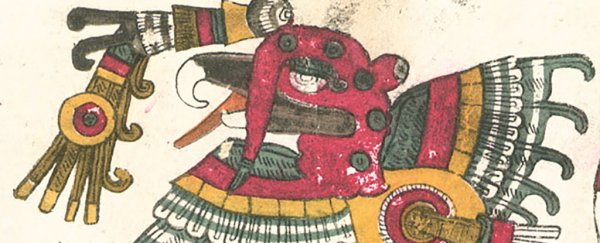Some of the earliest domesticated turkeys were reared for their cultural and symbolic significance in ancient Mexico, new research reveals, long before they became associated with festive dinners and sandwich fillings.
It turns out that the birds were being used for rituals, sacrifices, and even as stand-ins for deities for hundreds of years, prized by the Maya and Aztecs.
After looking at the remains of 55 turkeys which lived between 300 BCE and 1500 CE, an international team of researchers discovered that an increase in turkey farming did not correlate with an increase in population size – suggesting these birds weren't just being reared to be eaten.
"Turkey bones are rarely found in domestic refuse in Mesoamerica and most of the turkeys we studied had not been eaten," says lead researcher Aurélie Manin, from the University of York in the UK.
"Some were found buried in temples and human graves, perhaps as companions for the afterlife. This fits with what we know about the iconography of the period, where we see turkeys depicted as gods and appearing as symbols in the calendar."
Measurements of carbon isotope ratios in the bones of the turkeys helped to reconstruct their diets and establish when they had been domesticated – in other words, when they started eating foods grown by human beings.
A limited amount of genetic diversity in the remains is another indicator that these turkeys were being reared for domestic use rather than roaming through nature as wild animals, the researchers say.
Further DNA analysis confirmed that the birds were the ancestors of the modern European turkeys that were transported by merchant ships crossing the Atlantic.
The researchers also looked at the locations of the turkey bones and other archaeological pointers, establishing that there was probably a thriving business in turkeys along the continent's fledgling trade routes.
"The archaeological evidence suggests that meat from deer and rabbit was a more popular meal choice for people in pre-Columbian societies," says Manin. "Turkeys are likely to have also been kept for their increasingly important symbolic and cultural role."
Another finding raises more questions than answers though: analysis on the remains of the brightly plumed Ocellated turkey, a cousin of the common turkey, found that their diets were mostly made up of wild plants and insects.
Why these striking birds would not have been domesticated alongside the more plain variety is something of a mystery for the time being.
Still, we now know more than ever about the long history of turkeys and humans in this part of the world. A separate study from 2016 found that turkeys were being domesticated by Native Americans as well as the peoples of ancient Mexico.
Turkey feathers could be used for decoration, experts suggest, while turkey bones would've come in useful for making tools.
And it now seems clear that the turkey was one of the very first animals that people in Central and Northern America started taming – whether to take to the afterlife or to eat.
"Even though humans in this part of the word had been practicing agriculture for around 10,000 years, the turkey was the first animal, other than the dog, people in Mesoamerica started to take under their control," says one of the team behind the latest study, Camilla Speller from the University of York.
"Turkeys would have made a good choice for domestication as there were not many other animals of suitable temperament available and turkeys would have been drawn to human settlements searching for scraps."
The research has been published in Royal Society Open Science.
